Indoor ferns can enhance any interior living space and provide all year round interest with their delicate shapes and textures. The Victorians greatly valued the aesthetic appeal of ferns and between 1840 and 1890 there was a widespread desire to collect and display ferns; the fascination became known as pteridomania or Fern Mania. While this Fern Mania lasted, fern motifs found their way into most aspects of life including art, architecture and literature.

Where to grow indoor ferns
Choosing the right position for any houseplant is important if you want it to be as healthy as possible. Every house will have a range of different conditions and we should take care to choose the right place for our indoor ferns.
Indoor ferns enjoy a humid environment and damp compost, so never allow the compost to dry out completely. Although ferns enjoy high humidity, it is not practical to raise the moisture levels in our living rooms to such levels.
You can provide a localised humid micro-climate around your indoor ferns by standing them in a tray containing gravels and water. The evaporation of the water from the gravel raises humidity immediately around the foliage of the plants. This method is most successful if several plants are grouped together, and if there is not a lot of air movement through the room. You can easily monitor humidity levels with an inexpensive digital hygrometer
Indoor ferns enjoy good indirect light. Do not place them in positions where they receive long periods of direct sunlight, but avoid dark corners. Positions near to east or north facing windows can be suitable, avoiding draughts or radiators. If such positions are not available close to sources of natural light, you may consider using supplemental LED growlights which come in a range of sizes. Easy-to-use clip-on growlights can be conveniently fitted to shelves where you are growing ferns indoors. A timer socket can be added to control the amount of light they receive.
Indoor ferns are not heavy feeders. Feed with a general purpose liquid fertilizer once every 4 weeks between May and September but mix it to only half the recommended strength. Do not feed during the Winter months.
Choosing which indoor ferns to grow
You can find many indoor ferns at local garden centres and the like, and this number increases dramatically if you use a specialist fern nursery. The following ferns are some of the most widely available varieties which will perform well in the home.
Birds Nest Fern Asplenium nidus
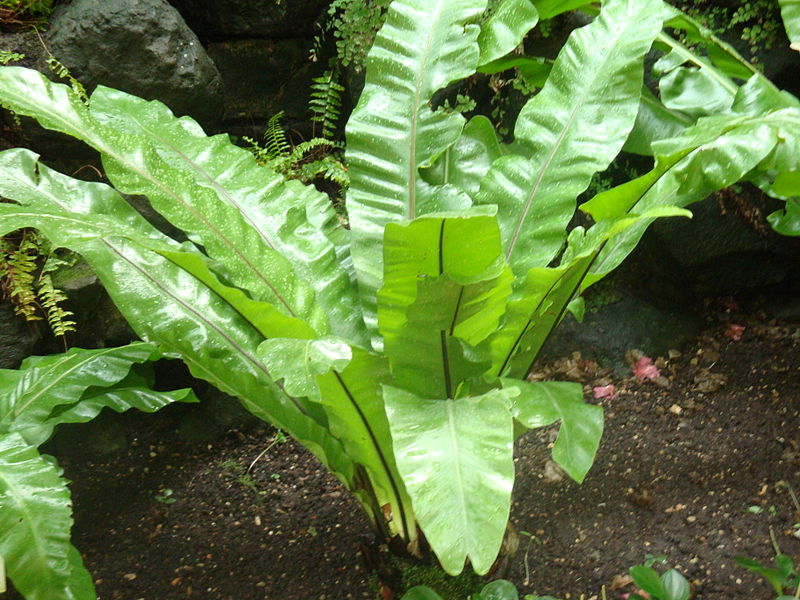
The Birds Nest Fern grows naturally as an epiphyte (on the surface of other plants) and in the wild it appears in the forks of branches in rainforests.
It produces erect to semi-erect wrinkled fronds from a central rosette. The fronds can become quite long, typically between 30 cm to 60 cm in cultivation.
Avoid direct sunlight as it can cause scorching to the fronds.
Maintain in warm conditions (18 – 26 Celsius) and good light, with as much humidity as possible. Grow in a rich, open compost with a good level of organic material. A mix of 3 parts peat compost to 1 part perlite will work well.
A number of forms are available online at Crocus.
Boston or Sword Fern Nephrolepis exaltata
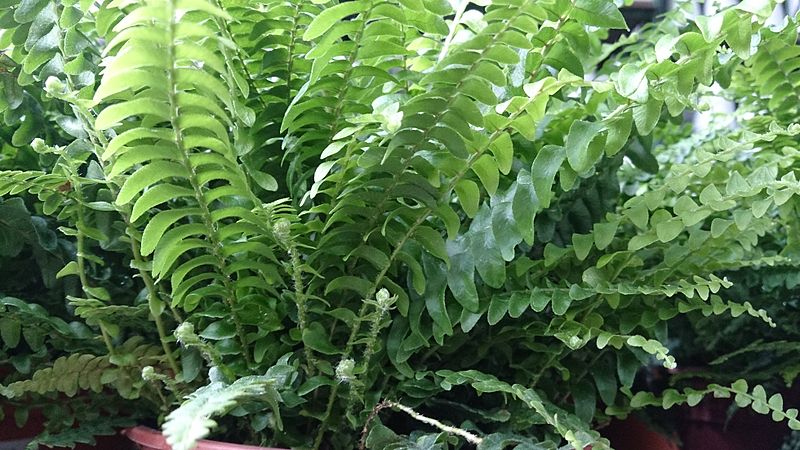
The Boston Fern, also known as the Sword Fern, is a very attractive bushy fern for interior room or conservatories.
In the wild Nephrolepis grows in hot, damp shady conditions – so ensure you keep the compost moist at all times and avoid cold draughty positions. Provide as much humidity as possible, and it is beneficial to mist the plant a few times a week.
Apply Liquid fertiliser, made up at half strength, once a month during Spring and Summer. Use an open structured compost rich in organic content.
These are great looking indoor ferns for pedestal planters or hanging baskets.
Staghorn Fern Platycerium bifurcatum
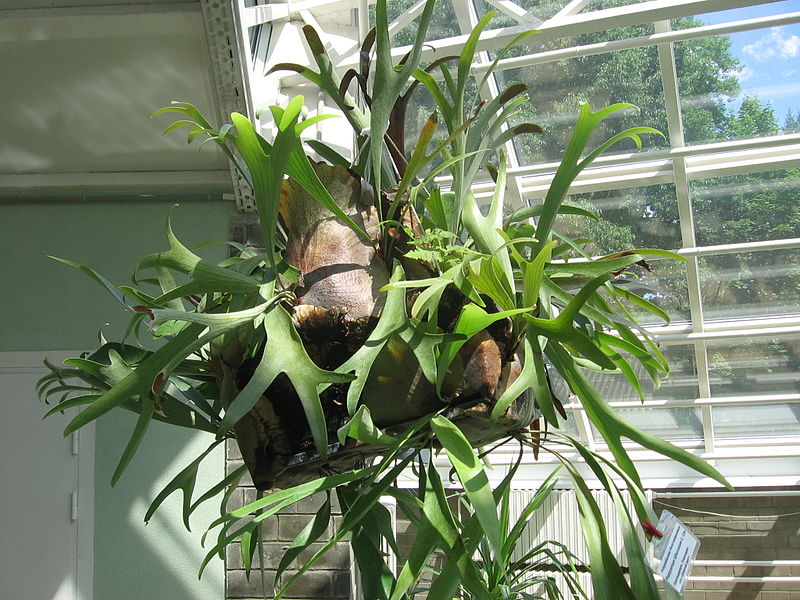
Staghorn Ferns (Platycerium spp.) are distinctly eye-catching with their distinctive foliage which resembles the antlers of a stag. In addition to the antler-like fronds, Staghorn Ferns produce a second type of leaf: these are flat leaves which overlap and press against the surface on which the fern grows in order to provide stability for the plant. In the wild Staghorn Ferns generally grow on tree trunks and branches so in cultivation it makes sense to display them in hanging baskets.
Platycerium species thrive in good indirect light and moderate moisture; water the plants regularly but allow the compost to dry out in between. It is important not to over-water, especially during Winter when growth slows down.
Over time Staghorn Ferns will produce baby plants around the crown, and you can remove these carefully and grow on individually.
Maidenhair Fern Adiantum raddianum
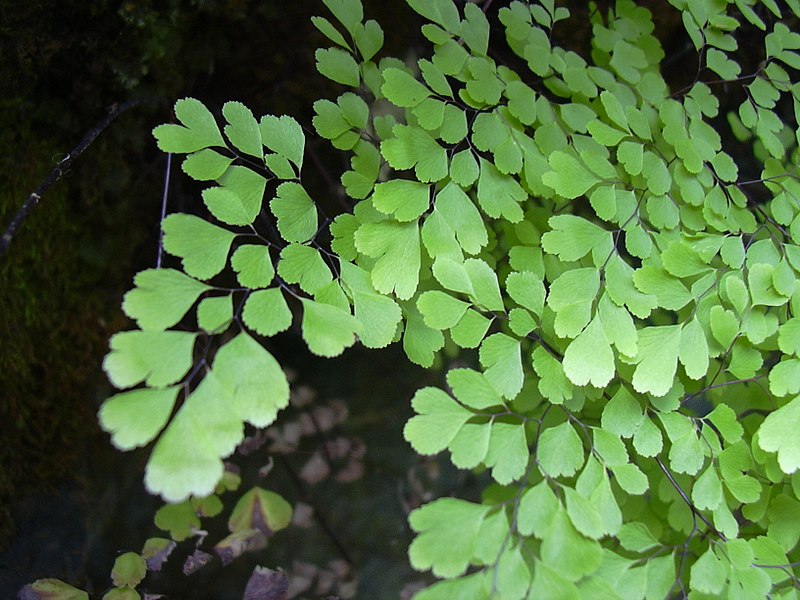
The genus Adiantum contains many species which are popularly known as Maidenhair Ferns, though Adiantum raddianum is one of the most widely grown species. These ferns are prized for their black frond stalks and delicate lime-green leaflets.
Maidenhair Ferns love high humidity but hate direct sunlight – so avoid south-facing windowsills and positions close to radiators. Due to their love of high humidity, these indoor ferns are ideal candidates for growing in a terrarium. An ideal temperature range is 18 to 25 degrees Celsius.
Re-potting should be done in Spring – once every two years is normally sufficient; use a peat based compost with a high organic content.
Rabbits Foot Fern Davallia (aka Humata) tyermanii
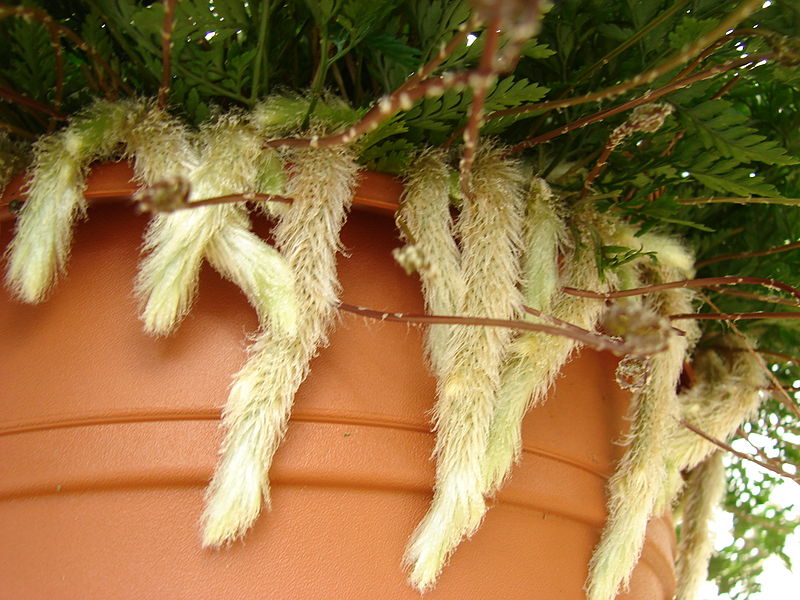
This indoor fern is a little different in appearance as it has distinctive furry rhizomes which spread across the surface of the compost and then down the sides of the container. The fern fronds develop from these entwining rhizomes to form an attractive dense plant over time.
This fern appreciates humidity and bright indirect light, but avoid full sun. A temperature range of 10 – 24 degrees Celsius is best for this plant.
Do not over-water this fern, allowing the compost to dry out slightly between each watering. Apply a half-strength liquid fertilizer once a month during Spring and Summer. Mist the fern occasionally but avoid soaking the hairy rhizomes.
The best time to re-pot is Spring, but only when the plant has become root-bound. Take care not to bury the rhizomes when re-planting. This fern can look very attractive when grown in a hanging basket.
Cretan Brake Fern Pteris cretica
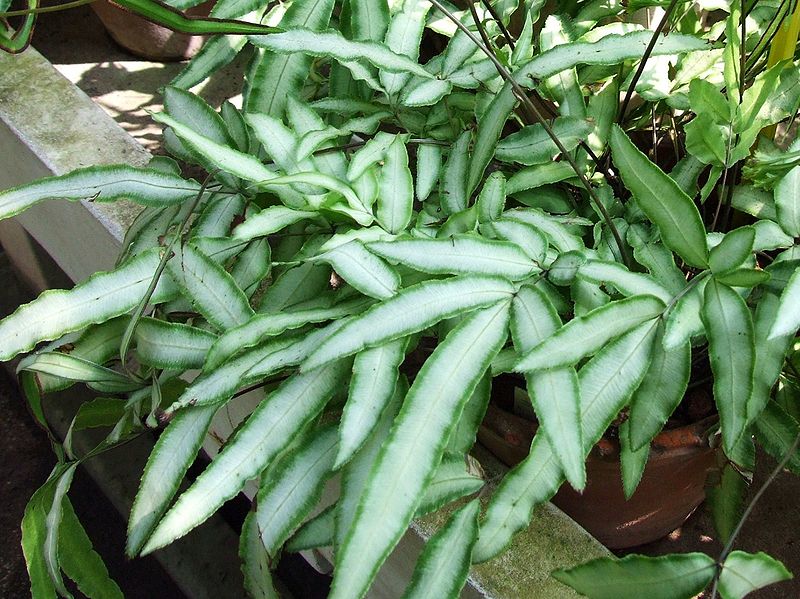
There are several varieties of Pteris cretica in cultivation but most share similar characteristics and may be cared for in a similar manner. An attractive form which is widely available is Pteris cretica albolineata, commonly known as the variegated Table Fern.
The plant is relatively forgiving of any lapses in care, so allowing the compost to dry out is not as harmful as with most other indoor ferns. Grow this fern in a compost with high organic content and keep in a temperature range of 18 – 25 degrees Celsius for best results. A half-strength liquid fertilizer can be applied once a month between April and September.
This fern can be propagated fairly easily by dividing established plants – ensure that each divided section has at least 3 fronds and a good piece of rhizome.
